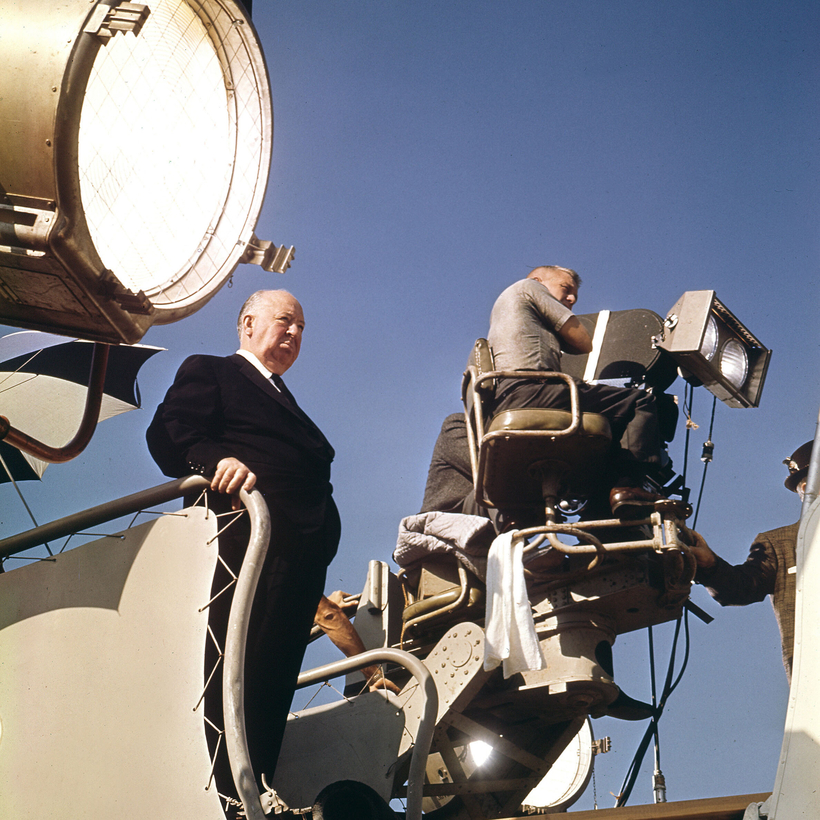In researching the various contradictory “lives” of Alfred Hitchcock—the private and public iterations of one of the 20th century’s most expert self-mythologizers—it was fascinating to read the letters he received from his remarkably varied audiences: from young children to the elderly, academics, left-field cinephiles, and prime-time-TV-watchers.
The most interesting mail (held in the archives of the Margaret Herrick Library, in Beverly Hills) dates from the late 50s and early 60s. Hitchcock was then at his commercial peak, thanks to the success of his television show, Alfred Hitchcock Presents, which heightened his fame and made him a prominent figure in the cultural lives of children. He was contacted by kids from all over the world, although, outside the U.S., he was especially popular in Germany.
The letters Hitchcock received hailed from a remarkably varied audience: young children and the elderly, academics, and prime-time-TV-watchers.
The letters often included autograph requests and story suggestions, some distinctly Hitchcockian: one child wrote to say that he’d been thinking about constructing a custom-made gallows, and calculated that “a 3 foot 9 inch drop would be sufficient to break your honorable neck.” The office of Alfred Hitchcock’s Mystery Magazine received so many letters from young fans that an official fan club was established, and a children’s detective-book series, Alfred Hitchcock and the Three Investigators, was eventually launched.
Hitchcock’s TV success coincided with a golden run of movies, some of which were darker and more experimental than anything he’d ever made. The letters regarding his films tended to be from adults, many of whom were first-rate pedants.
After the release of North by Northwest, in 1959, for example, viewers wrote to upbraid Hitchcock over all manner of minor flaws and discrepancies: the misrepresentation of the Indiana landscape in the crop-duster scene, the inaccurate depiction of railroad workers, the unconvincing shorthand employed by Roger Thornhill’s overworked secretary in the opening scene.

A year later, Psycho elicited similar responses, in addition to the outrage over the film’s displays of violence and bare flesh. One doctor said the shower scene was ruined by Marion Crane’s insufficiently dilated pupils as she lay dead on the bathroom floor. Another man was irritated that the motorcycle cop who asks Marion for her ID failed to follow the protocol required of a California law-enforcement officer.
As he predicted, Hitchcock received dozens of letters about the ambiguous ending of The Birds, in which the principal characters drive slowly away from the scene of a frenzied avian assault, nobody any the wiser as to what had triggered it. Some viewers apologized for their dimness in not “getting” it, and pleaded for an explanation, but others expressed genuine anger that Hitchcock had ended the movie on an imperfect cadence. Some took him to task for being an artsy Hollywood elitist insulting his public; several asked for a refund, feeling they’d wasted good money on a story that was only half told; others just seemed disappointed that their Hitchcock, the crowd-pleasing yarn-spinner of the 1950s, had been taken away from them and replaced by someone more troubling and complicated.
Hitchcock received dozens of letters about the ambiguous ending of The Birds, with some viewers expressing genuine anger.
Most absorbing of all, however, are the letters from those seeking to have Hitchcock confirm their own interpretations. One correspondent, writing a year after the Port Huron Statement, and five months before the Kennedy assassination, believed The Birds was about a new sentiment bubbling up in American life, the erosion of the old order, and the emerging threat of civil unrest. Six tumultuous years later, in 1969, a woman wrote to tell Hitchcock that she had just realized that the film was about racial injustice. The birds, she believed, represented a long-oppressed ethnic minority who, having been “shot at, caged up, eaten, and literally taken for granted … couldn’t endure the degradation any longer!”
Hitchcock took pains to present himself in contradictory guises: he was simultaneously a vaudevillian and a serious artist, a plain conformist and an ironical taboo-buster, a Victorian relic and a 20th-century pioneer. Civil-rights activist was not in his dress-up box: with notable exceptions, such as Murder! (1930) and Lifeboat (1944), racial discrimination is rarely an explicit theme in Hitchcock’s vast body of work. But by this stage of his career, more than 40 years after his first box-office success, Hitchcock had created films whose lives he could not control, invented and re-invented with each passing generation of viewers, every frame scrutinized in forensic detail—a phenomenon that continues to this day.
Edward White’s The Twelve Lives of Alfred Hitchcock: An Anatomy of the Master of Suspense will be published on April 13 by W. W. Norton
